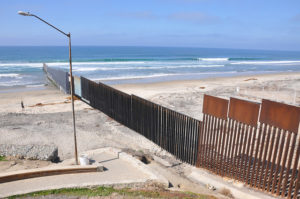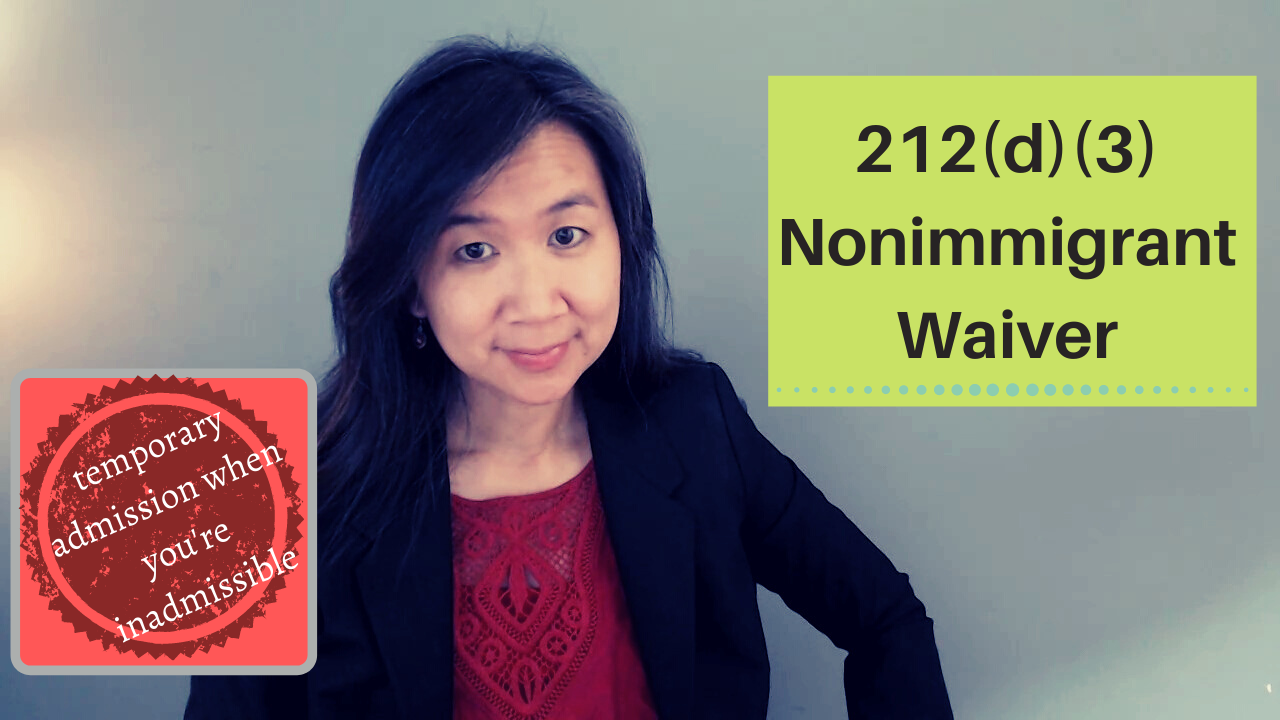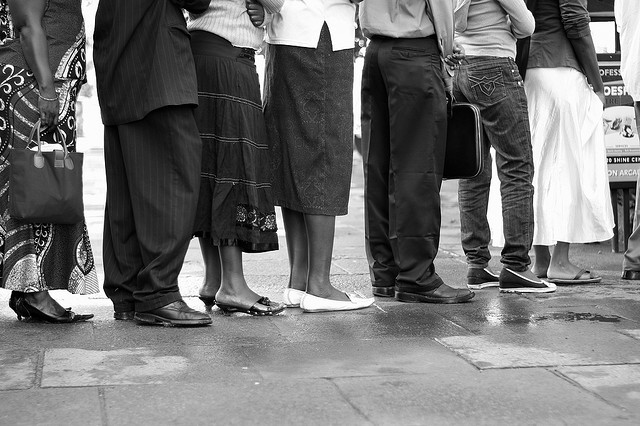 Donald Trump’s Administration will begin when Barack Obama’s ends on January 20, 2017. The risk of deportation is expected to get higher for unauthorized immigrants, particularly those with illegal entries and certain criminal histories. A Trump Administration could also repeal Obama’s Deferred Action for Childhood Arrivals Program (DACA) and set the stage for H-1B (professional worker) visa reform.
Donald Trump’s Administration will begin when Barack Obama’s ends on January 20, 2017. The risk of deportation is expected to get higher for unauthorized immigrants, particularly those with illegal entries and certain criminal histories. A Trump Administration could also repeal Obama’s Deferred Action for Childhood Arrivals Program (DACA) and set the stage for H-1B (professional worker) visa reform.
These are just some of the potential changes in U.S. immigration, if you accept Trump’s rhetoric at face value.
Here’s how the Trump Factor could affect immigration if his 10 Point Plan to Put America First and election campaign promises are carried out:
1. “Begin working on an impenetrable physical wall on the southern border, on day one.” (#1 on Trump’s 10 Point Plan)
“Build that wall! Build that wall!” was a popular chant at Trump’s campaign rallies. According to Trump, the wall would cover 1,000 miles of nearly 2,000 miles of the southern U.S-Mexico border, with half of that protected by natural barriers.
As of today, there are already 700 miles of border fencing and some of it includes metal wall. There are also U.S. Border Patrol agents, drones, scanners and cameras protecting the border. A record number of removals and returns occurred under Obama.
Between 2000 and 2010, U.S. taxpayers spent $90 billion on border security. The costs involve deploying National Guard troops to the border, paying U.S. Customs and Border Protection (CBP) agents, building barriers, employing drug-sniffing dogs, and using predator drones.
Whether “an impenetrable physical wall” is built will depend on various factors, including who pays for it. Trump says Mexico will foot the bill. Otherwise, it might take an act of Congress to obtain funding for the wall.
A wall is mostly symbolic. It’s not enough to keep out unauthorized immigrants, especially those possessing fraudulent travel documents or those misusing their visas or the visa waiver program. Border security requires constant monitoring by properly trained CBP agents.
2. “End catch-and release.” (#2 on Trump’s 10 Point Plan)
Ending the so-called “catch-and release” policy will bring more serious immigration consequences to noncitizens stopped at the border. Trump’s plan is to detain anyone who illegally crosses the border until he/she is removed from the country.
In November 2014, the Obama Administration issued a Policy Memorandum on the apprehension, detention and removal of undocumented immigrants. The policy divided enforcement priorities into three general categories:
Priority 1: Aliens who pose a threat to national security, border security, or public safety.
Priority 2: Aliens who are misdemeanants and new immigration violators.
Priority 3: All other immigration violators.
The Policy Memorandum instructs the agencies to focus on priority one and priority two offenders. If the Memorandum is withdrawn by Trump, each local ICE agency will have more freedom to decide who it wants to remove from the U.S.
Policy Memorandums are opinion letters from agency heads instructing CBP, U.S. Immigration & Customs Enforcement (ICE) and U.S. Citizenship & Immigration Services (USCIS) how to enforce current law. The Trump Administration may readily revoke Policy Memorandums, and replace them with new, hard-line ones – consistent with laws already passed by Congress
While the Obama Administration prioritized the removal of criminal non-citizens and repeat offenders, Trump has vowed to detain all persons who enter the U.S. illegally and spare no group of unauthorized immigrants. This spells an increase in immigration detention, removal proceedings before immigration courts, and expedited removal at the border or ports of entries.
Resources are limited. If there is no formal prioritization for immigration enforcement, more immigration judges and prosecutors will be needed to prevent increased backlog in the removal system.
3. “Move criminal aliens out day one, in joint operations with local, state, and federal law enforcement.” (#3 on Trump’s 10 Point Plan)
“Criminal aliens” is a very broad term. “Aliens” include lawful permanent residents (green card holders) because they are not U.S. citizens. Criminal offenses range from misdemeanors to felonies. There are various types of crimes, such as DUI, assault, drug possession, theft, fraud, domestic violence, and murder.
Criminal convictions can lead to a non-citizen being deported from the U.S., denied entry (or reentry) into the U.S., and stripped of immigration benefits, including permanent residence. The immigration consequences continue long after the person has already served his sentence.
But under current immigration law, not all non-citizens with criminal offenses are subject to removal or denial of entry on crime-related grounds. For example, a noncitizen is deportable if convicted of a Crime Involving Moral Turpitude (other than a political offense), but only when it was committed within five years after the date of his admission to the U.S., and for which a sentence of one year or longer may be imposed.
In addition, the U.S. Constitution provides due process and equal protection to all persons, including “criminal aliens. ” In a 2001 case, Zadvydas v. Davis, the U.S. Supreme Court reaffirmed that the due process clause applies to aliens whose presence may be or is “lawful, unlawful, temporary, or permanent.”
Existing immigration law also permits defenses against removal and applications for relief from removal before the Immigration Court, if the person is eligible.
Due to Constitutional rights, legal obstacles, and limited cooperation from certain local law enforcement agencies, it will be very difficult for the Trump Administration to move criminal aliens out day one.
Still, Trump will get help from the U.S. Attorney General, who is in charge of the Justice Department’s Executive Office for Immigration Review, including the immigration courts. The office sets standards for hiring and selecting immigration judges, and for training them on how to apply immigration law.
Sen. Jeff Sessions (R-Ala.) has been picked by Trump for Attorney General and, if confirmed, will influence immigration policy. The Attorney General may issue legal opinions to promote executive actions; hire more hard-line judges for federal immigration courts; and challenge the legality of state immigration policies.
4. “End sanctuary cities.” (#4 on Trump’s 10 Point Plan)
Since Trump’s election, many “sanctuary” counties and cities, like New York, Minneapolis-St. Paul, San Francisco and Seattle have vowed to limit their cooperation with federal immigration authorities. They won’t stop immigration authorities from enforcing federal law within their boundaries. But they will focus on local law enforcement so residents don’t avoid talking to the police out of fear of deportation risks.
An “immigration hold” (detainer) is one of the key tools ICE agents use to apprehend individuals who come in contact with local and state law enforcement agencies and place them in the federal removal process.
An ICE detainer is a written request to a local jail or other law enforcement agency to detain persons for an additional 48 hours (excluding weekends and holidays) after their release date to permit ICE to decide whether to take them into federal custody for removal purposes. ICE detainers are not followed in some counties and they have been challenged in federal courts.
Threats to cut federal funding to “sanctuary” counties and cities do not make an effective long-term strategy.
5. “Immediately terminate President Obama’s two illegal executive amnesties.” (#5 on Trump’s 10 Point Plan)
During his two-term Administration, Obama has never granted “amnesty” – at least not to the extent that President Reagan did when he signed the 1986 Immigration Reform and Control Act that permitted 3 million undocumented immigrants to apply for lawful immigrant status.
Through executive policy, Obama introduced the Deferred Action for Childhood Arrivals (DACA) program on June 15, 2012. DACA was made available to undocumented immigrants who were under the age of 31 and who came to the U.S. before age 16. Certain other eligibility requirements also have to be met, such as no conviction of a felony, significant misdemeanor,or three or more other misdemeanors, and no threat to national security or public safety.
While DACA provides relief from removal, work authorization, and authorized stay in the U.S., it does not offer a path to permanent residence or citizenship or provide lawful immigration status in the U.S. Moreover, USCIS may share the information in a DACA request with national security and law enforcement agencies, including ICE and CBP, for purposes other than deportation, including to identify or prevent fraudulent claims, for national security purposes, or for the investigation or prosecution of a crime.
The expanded DACA and new Deferred Action for Parents of Americans and Lawful Permanent Residents (DAPA) programs, that were expected to kick in on February 18, 2015 and May 19, 2015, respectively, were put on hold by a federal court injunction.
In a February 16, 2015 decision, U.S. District Court Judge Andrew Hanen in Texas sided with the Texas-led coalition of 26 states that filed a lawsuit to block the implementation of the expanded DACA and the new DAPA. Then in a June 23, 2016 decision, the U.S. Supreme Court affirmed the judgement in a 4-4 decision, effectively blocking the programs from being rolled out.
DACA and DAPA were intended to protect undocumented immigrants in low-priority categories from removal and bring them out of the shadows. But in his 10 Point Plan, Trump notes, “Anyone who enters the U.S. illegally is subject to deportation. That is what it means to have laws in this country.” Taken literally, this statement reveals that even undocumented immigrants who came to the country illegally as children, and who grew up in the U.S., do not have to be considered low priority for removal.
There is a growing fear of detention and removal among DACA recipients, who listed on the DACA applications all their residential addresses from the time they entered the U.S. Locating DACA recipients is easier than finding undocumented immigrants who never applied for the relief.
Some immigration attorneys are advising DACA recipients to avoid filing for renewals at this time, until the future of the program is decided after Trump takes office. Others recommend DACA renewals be filed while the program is still intact.
During his campaign, Trump promised to rescind such executive actions and orders by Obama. He may revoke DACA altogether or issue an order preventing new DACA applications or renewals. Whether the Trump Administration will use the addresses on the DACA applications to initiate removal proceedings is a concern. But for practical, political and financial reasons, Trump will likely prioritize removal of unauthorized immigrants with serious criminal records, just like Obama.
A repeal of Obama’s executive actions does not prevent immigrant relief passed by Congress. On December 9, 2016, Sen. Dick Durbin (D. Ill.) and Sen. Lindsey Graham (R-S.C.) introduced legislation called the Bar Removal of Individuals who Dream and Grow Our Economy (BRIDGE Act), to protect persons who would otherwise qualify for DACA.
6. “Suspend the issuance of visas to any place where adequate screening cannot occur, until proven and effective vetting mechanisms can be put into place.” (#6 on Trump’s 10 Point Plan)
The President sets the number of refugees who will resettle in the U.S. each year. The Obama Administration met its target of settling at least 10,000 Syrian refugees in the U.S. by the end of fiscal year 2016. On the other hand, Trump expressed his intent to halt the Syrian refugee program and “suspend immigration from terror-prone regions where vetting cannot safely occur.” The regions include Syria, Afghanistan and Somalia, which produce half of the world’s refugees.
The Trump Administration could also implement additional security protocols to make it harder for applicants who are Muslim, believed to be Muslim, or from Muslim-majority countries to obtain visas, especially tourist/visitor visas and other nonimmigrant visas. Trump may issue an executive order to temporarily suspend or cancel entry to the U.S. on nonimmigrant visas from target countries. Even if such a policy is eventually struck down by the courts, it will slow down visa processing for all applicants.
The processing of I-130 (family-based) and I-140 (employment-based) immigrant petitions, which is the first step in obtaining an immigrant visa at the U.S. Consulate, is unlikely to be affected by a Trump Administration. Filing fees, not tax dollars, provide funding for USCIS’ review of immigrant petitions. The availability of immigrant petitions in the family-based and employment-based categories is also governed by statutory law, not by the President.
Immigrant-based visas such as the F-1 fiance visa and CR immigrant visa already have strict requirements. Nevertheless, the Trump Administration could suspend the issuance of such visas until more vetting mechanisms are implemented.
6. “Reform legal immigration to serve the best interests of America and its workers, keeping immigration levels within historic norms.” (#10 on Trump’s 10 Point Plan)
Legal immigration is governed by regulations and legislation, not by a President’s executive action. The President’s immigration policy must operate within the bounds of existing law. The President has limited power to regulate and deregulate. Only Congress has power to introduce and pass immigration laws.
Regulation
A regulation is much harder to rescind than an executive order. The Administrative Procedure Act requires all regulations to be published in the Federal Register, undergo public notice-and-comment, receive financial consideration by the Office of Management and Budget, and be finalized for rulemaking. The I-601A Provisional Unlawful Presence Waiver is one example of a regulation.
Under statute passed by Congress, a person is generally barred from reentering the U.S. for 3 years if he accrued more than 180 days to less than 1 year of unlawful presence before leaving the U.S. The bar to reentry is 10 years if the unlawful presence lasted 1 year or more. The 3/10 year bar is triggered when the person departs the U.S. (without advance parole) to apply for an immigrant visa. The unlawful presence waiver, which is available under statutory law, excuses certain eligible persons from the 3/10 year bar.
On March 4, 2013, the Obama Administration introduced the I-601A regulation modifying the process for applying for the unlawful presence waiver. It allows eligible immigrant visa applicants to file for the waiver while they are still in the U.S. if the 3/10 year bar is the only ground that prohibits reentry to the U.S. The final rule expanding the I-601A waiver to all statutorily eligible applicants went into effect on August 29, 2016.
A new President may suspend the effective date of regulations that have yet to take effect. During the suspension, the Administration decides whether to begin a regulatory process to repeal the regulation and prevent it from taking effect. For regulations passed in approximately the last eight months of the prior Administration, the new Administration may ask Congress to use the Congressional Review Act to overturn a recently issued regulation. The Act, however, may not be used on any regulations issued before May 2016.
If Trump wants to change or cut the I-601A waiver process, he will have to introduce a new regulation, have the regulation go through public notice-and-comment, make adjustments, and then have the final rule published. While elimination of the I-601A process is possible, this does not seem to be a high priority for Trump.
Legislation
Legislation, passed by Congress, is the toughest to repeal and replace. Comprehensive Immigration Reform has been discussed extensively, but no new broad bills have been enacted for decades. Although the House and Senate are controlled by Republicans, they do not all agree with Trump’s proposed plans.
Permanent changes to the Immigration and Nationality Act, which governs legal immigration, including which persons are eligible for permanent residence, naturalization, or relief from removal, requires an act of Congress. Legislative changes require approval of bills by both the House and Senate. The President has limited veto power.
Trump’s 10 Point Plan promises to return U.S. jobs to U.S. workers. He vowed to suspend the North American Free Trade Agreement (NAFTA), a three-country accord negotiated by the governments of Canada, Mexico, and the U.S., which went into effect on January 1994. The treaty contains the TN visa category for professionals from Mexico and Canada. If Trump suspends NAFTA, the TN visa could also go away.
Trump has also criticized the H-1B professional program. With an annual cap of 65,000 per year, plus an additional 20,000 for foreign workers with a U.S. master’s degree or higher, the H-1B program is subject to legislative changes by Congress.
With U.S. business interests at stake, and general support of the H-1B program from both Republicans and Democrats in Congress, the nature of H-1B reform (if any) is uncertain. An expansion of the H-1B visa program is unlikely if the Republican-controlled Congress falls in line with Trump’s promises. Instead, Congress could introduce an American-worker-first element that requires recruitment of U.S. workers prior to filing an H-1B petition for a foreign worker.
To Fear or Not to Fear?
Trump’s 10 Point Plan and campaign promises are a legitimate source of fear for immigrant communities. But campaign talk is not always followed by action. U.S. Presidents lack unfettered power, fail to carry out plans, and do the opposite or a watered-down version of what they said they would do.
No one can fully predict the impact of a Trump Administration on immigration. Uncertainty breeds fear. But the fear is not necessarily based on reality.
If you are an undocumented immigrant or noncitizen with concerns about removal from the U.S. or being denied entry into the U.S., your best step is to consult an immigration attorney about your options under current law, regulation or policy. An experienced and attentive attorney can also guide you through immigration changes under a new Administration.
This article provides general information only. It is based on law, regulations and policy that are subject to change. Do not consider it as legal advice for any individual case or situation. Each legal case is different and case examples do not constitute a prediction or guarantee of success or failure in any other case. The sharing or receipt of this information does not create an attorney-client relationship.
Photo by: BBC World Service


 Section 212(a) of the Immigration & Nationality Act lists the grounds on which a foreign national is barred from entering the United States. Inadmissible persons may not obtain a nonimmigrant visa (e.g. B-1/B-2 visitor, F-1 student, H-1B worker) or enter the U.S. as a nonimmigrant without a section 212(d)(3) waiver. Visa-exempt persons (e.g. most Canadian citizens) and persons who already have travel documents also need the waiver if they are inadmissible to the U.S.
Section 212(a) of the Immigration & Nationality Act lists the grounds on which a foreign national is barred from entering the United States. Inadmissible persons may not obtain a nonimmigrant visa (e.g. B-1/B-2 visitor, F-1 student, H-1B worker) or enter the U.S. as a nonimmigrant without a section 212(d)(3) waiver. Visa-exempt persons (e.g. most Canadian citizens) and persons who already have travel documents also need the waiver if they are inadmissible to the U.S.
 Every year on April 1, USCIS begins accepting H-1B cap petitions from U.S. employers. Congress sets an annual limit on the number of new H-1B visa petitions that can be approved each year. During the last several years, the regular cap of 65,000 visas and master’s cap of 20,000 visas has been reached in the first week of April.
Every year on April 1, USCIS begins accepting H-1B cap petitions from U.S. employers. Congress sets an annual limit on the number of new H-1B visa petitions that can be approved each year. During the last several years, the regular cap of 65,000 visas and master’s cap of 20,000 visas has been reached in the first week of April.